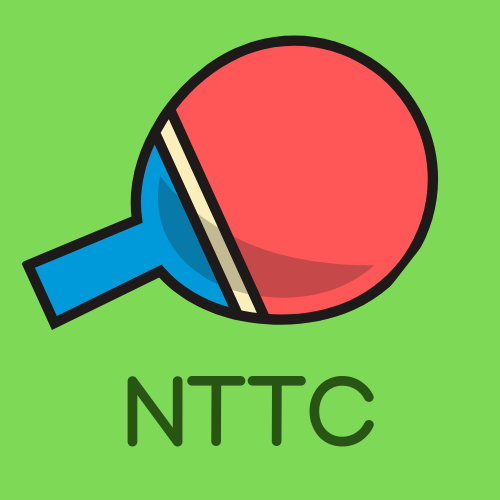Forehand and Backhand Pushes
The Basics of Forehand and Backhand Push.
There are four basic strokes in table tennis. In my first blog post, I discussed two of them; forehand and backhand strokes. In this post, I will talk about the other two; forehand and backhand pushes/chops. A push is essentially a defensive stroke, and to play a push you have to use backspin or underspin on the ball.
Players usually use push strokes when their opponent is serving a backspin serve to them. Playing a push stroke against an underspin serve is an easy and quick way to return the ball. You will often see defensive players using this technique.
Once my students learned the basics of the forehand and backhand strokes, then I teach them the push stroke because there is a spin technique involved in executing the push strokes.
There are three basic steps to execute the forehand and backhand push; ready position, the follow-through or swing, and recovery. Let’s talk about the backhand push first.
Backhand push:
Ready position
Hold your racket using the shake hand grip. The tip of the racket should be pointing towards your opponent.
For the backhand push, stand on the left side of the table, one foot away from the table. Your feet should be wider than your shoulders.
Bend your knees down and lean your upper body forward.
The Swing or follow-through
Bring your racket backward and a little upward toward your chest. Now move your forearm to push the ball towards the table, brush the ball to create an underspin. Your wrist and elbow must be stable when the ball is approaching towards you.
The angle of the racket must be slightly open.
When you move your forearm to hit the ball make sure to brush the ball at the top of the bounce or a little early.
Once you brush the ball, bring back your forearm and point the tip of the racket to your opponent.
Adjust the angle of the racket a little upward above the net, if the ball hits the net or the ball lands outside the table.
Recovery
Relax and bring your forearm back
The racket should be open or neutral. The tip of the racket should point towards your opponent.
Check out my video on how to do the backhand push, here.
Similar to the backhand push, the forehand push is also divided into 3 basic steps; the ready position, the swing, and the recovery.
Forehand Push:
Ready position
Stay on the right side of the table, and stand about a foot away from the table. Your feet should be wider than your shoulders.
Bend down your knees a little, lean the upper part (torso) of your body forward.
Position your elbow 6 inches away from your body.
The Swing or follow-through
Bring your racket backward and a little upward toward the side of your body,
Move your forearm to push the ball towards the table, brush the ball to create an underspin (wrist and elbow must be stable) when the ball is approaching towards you.
The racket angle should be slightly open so you can brush the ball.
Move your forearm to hit the ball and make sure to brush the ball at the top of the bounce or a little early.
After brushing the ball bring back your racket and point the tip of the racket toward your opponent.
Adjust the angle of the racket a little upward above the net, if the ball hits the net or the ball lands outside the table.
Recovery
Relax and bring your forearm back.
The racket should be open or neutral, the tip of the racket pointing towards your opponent.
Check out my video on how to do the forehand push, here.
If you learn how to execute the forehand and backhand push correctly, it will help you enhance to an advanced deep push or chop. Push strokes are very useful to play against incoming short and low balls. You can also use this stroke against an underspin or backspin serve.
